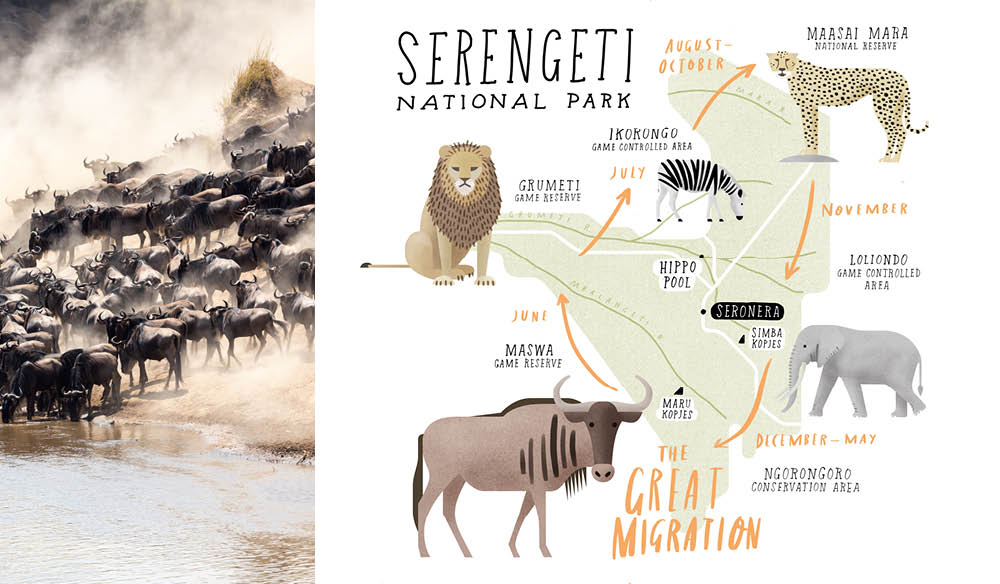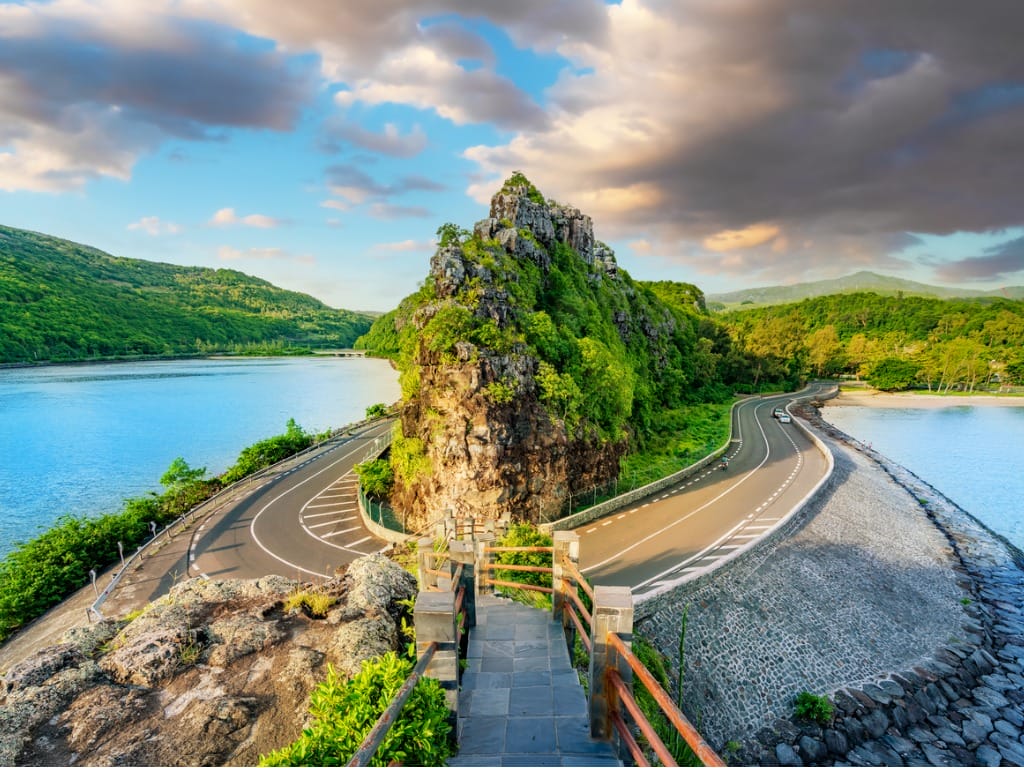The Serengeti National Park is a vast wildlife reserve in Tanzania, East Africa. It is renowned for its remarkable biodiversity and is considered one of the most iconic wildlife destinations in Africa. This guide aims to provide a comprehensive overview of the park, including its geography, climate, history, cultural significance, biodiversity, planning a visit, accommodation options, conservation efforts, and more. So, let’s delve into the fascinating world of the Serengeti!
Understanding the Serengeti: An Overview
The Serengeti National Park spans an impressive area of approximately 14,750 square kilometers and is located in the northern region of Tanzania. Its varied landscapes encompass vast grassy plains, savannahs, woodlands, and riverine forests, creating a diverse and thriving ecosystem. The park is part of the larger Serengeti ecosystem, which includes protected areas in Kenya and encompasses a staggering 30,000 square kilometers.
Geography and Climate of the Serengeti
The Serengeti is characterized by its expansive plains, which provide an ideal habitat for a wide range of wildlife. The park is also home to the world-famous Great Migration, where millions of wildebeest, zebras, and other herbivores journey across the plains in search of water and fresh grazing grounds.
Over the course of a year, the Serengeti experiences distinct seasons. The dry season, which occurs from June to October, offers excellent wildlife viewing opportunities as animals gather at watering holes. The wet season, from November to May, brings lush vegetation and the birth of new wildlife, including thousands of wildebeest calves. Each season offers a unique and captivating experience for visitors.
History and Cultural Significance of the Park
The Serengeti has a rich history dating back thousands of years, with evidence of human habitation in the area since the Stone Age. The Maasai people have long inhabited the Serengeti and have relied on its resources for their survival. Today, their cultural traditions and lifestyle continue to be deeply intertwined with the park’s ecosystem.
The park was officially established in 1951 as a wildlife reserve to protect the diverse array of species found within its borders. In 1981, the Serengeti National Park was designated as a UNESCO World Heritage site, recognizing its exceptional natural value to humanity.
The Biodiversity of the Serengeti National Park
The Serengeti is a haven for wildlife enthusiasts, offering unrivaled opportunities to spot some of Africa’s most iconic species. From majestic lions and nimble cheetahs to towering giraffes and graceful elephants, the park is teeming with an abundance of wildlife. In fact, over 70 large mammal species and more than 500 bird species call the Serengeti home.
The Great Migration: A Natural Phenomenon
Undoubtedly, one of the most awe-inspiring sights in nature is the Great Migration. Each year, millions of wildebeest, zebras, and other herbivores undertake a treacherous journey from the southern Serengeti to the northern Masai Mara in Kenya, and back. This incredible spectacle is driven by the search for fresh grazing and water sources, as well as the instinct to give birth in the safety of the plains.
Witnessing the Great Migration is a once-in-a-lifetime experience that showcases the resilience and adaptability of nature. Travelers can choose to embark on guided safaris, hot air balloon rides, or simply find a strategic vantage point to appreciate the sheer magnitude of this natural phenomenon. 
Iconic Wildlife and Endangered Species
The Serengeti is a veritable paradise for wildlife enthusiasts, offering unrivaled opportunities to see Africa’s iconic species up close. Alongside the “Big Five” (lions, elephants, buffaloes, leopards, and rhinoceroses), the park is home to cheetahs, hyenas, giraffes, hippos, and numerous antelope species.
However, it is important to note that some of these species face significant threats, including poaching and habitat loss. Efforts are being made to protect and conserve these endangered creatures, such as the black rhinoceros and the African wild dog. Visitors can support these conservation efforts by patronizing responsible tour operators and staying informed about sustainable wildlife practices.
Planning Your Visit to the Serengeti
If you’re considering a trip to the Serengeti, it’s essential to plan ahead to make the most of your experience.
Best Times to Visit for Wildlife Viewing
The dry season, from June to October, is widely regarded as the best time to spot wildlife in the Serengeti. During this period, animals congregate around water sources, making it easier to observe them in action. Additionally, the lack of foliage allows for better visibility and increased chances of witnessing predator-prey interactions. However, it’s worth noting that the dry season attracts larger crowds, so early bookings are advised.
For those interested in witnessing the Great Migration, timing is crucial. The herds typically migrate from December to June, moving across the plains in search of greener pastures. To maximize your chances of witnessing this natural spectacle, it’s best to research the migration patterns and plan your trip accordingly.
Essential Tips for a Safe and Enjoyable Visit
When visiting the Serengeti, it’s important to prioritize your safety and that of the wildlife you encounter. Follow the guidance of your experienced guides, maintain a safe distance from animals, and respect the park’s rules and regulations. Additionally, packing essentials such as sunscreen, insect repellent, binoculars, and sturdy walking shoes will enhance your comfort and overall experience.

Accommodation and Amenities in and around the Serengeti
There are various accommodation options available for visitors to the Serengeti, ranging from luxurious lodges to comfortable tented campsites.
Choosing the Right Safari Lodge or Campsite
Several reputable safari lodges and tented camps can be found both within the Serengeti National Park and in the surrounding areas. These establishments offer a range of accommodation styles to suit different preferences and budgets. From upscale lodges with modern amenities to more rustic tented camps, each option provides an immersive experience in the heart of the wilderness.
Dining and Other Amenities in the Park
In terms of dining, most lodges and camps in the Serengeti offer a selection of delicious meals featuring local and international cuisine. From hearty breakfasts to picnic lunches and multi-course dinners, travelers can savor mouthwatering dishes while enjoying breathtaking views of the surrounding landscapes.
Additionally, some lodges and camps offer amenities such as swimming pools, spa facilities, and evening entertainment to enhance guests’ comfort and relaxation after a day of wildlife exploration.
Conservation Efforts in the Serengeti
Preserving the Serengeti’s extraordinary biodiversity and delicate ecosystem is of utmost importance. The park faces various challenges, including habitat degradation, poaching, and human-wildlife conflicts.
Threats to the Serengeti Ecosystem
Human activities, such as farming and illegal settlements, pose a significant threat to the Serengeti’s ecosystem. These activities encroach upon wildlife habitats and disrupt migratory routes, ultimately affecting the delicate balance of the ecosystem.
How Visitors Can Support Conservation Efforts
As visitors, we can play an active role in supporting conservation efforts in the Serengeti. By choosing responsible tour operators and accommodations that prioritize sustainable practices, we can contribute to the protection of the park’s biodiversity. Additionally, spreading awareness about the importance of conservation and respecting the park’s rules and regulations are essential to ensure its long-term survival.
As you plan your journey to the Serengeti National Park, immerse yourself in the wonders of this extraordinary wildlife reserve. Witness the Great Migration, marvel at the vast biodiversity, and embrace the rich cultural heritage that defines this iconic African destination. The Serengeti offers an unforgettable experience that will leave you with lasting memories of nature’s grandeur.



